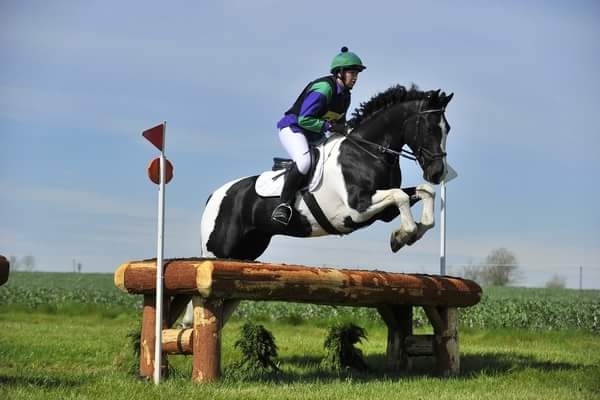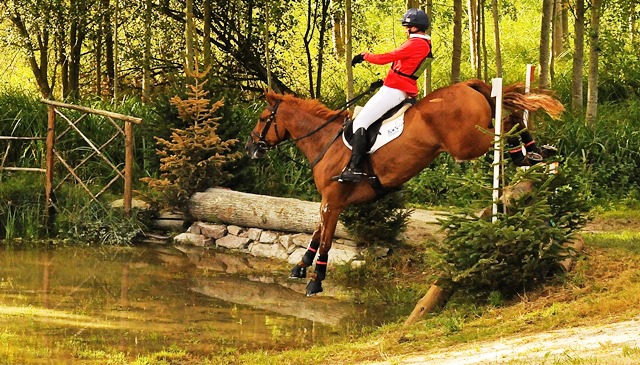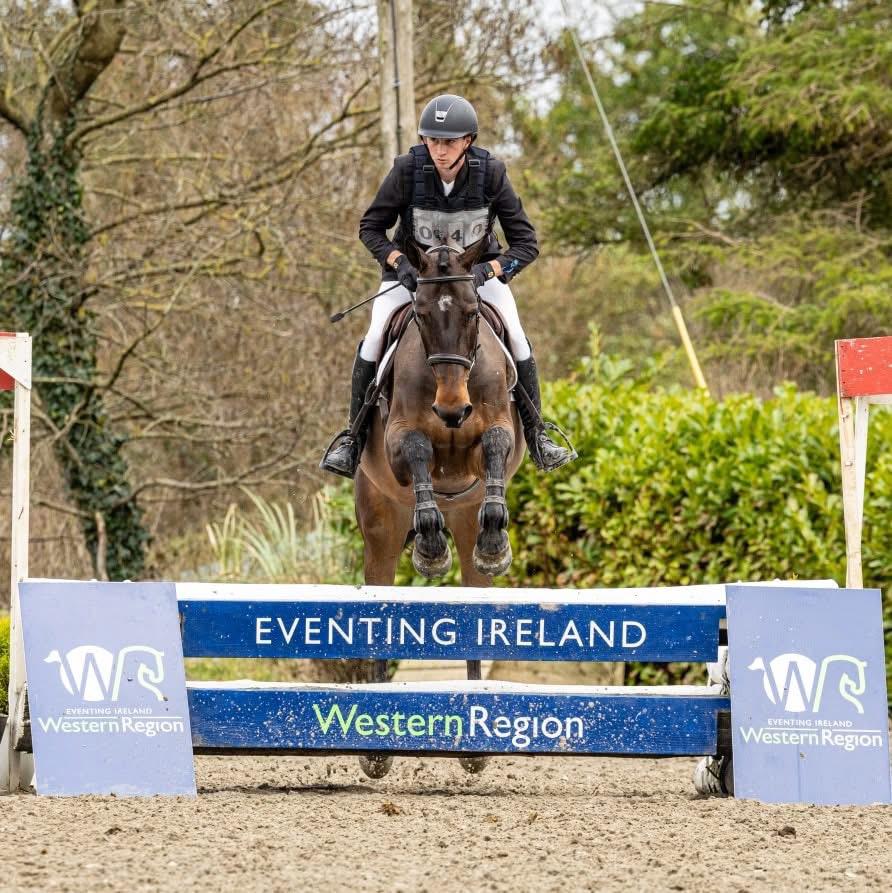
Gemma Tattersall and Quicklook V. Photo by Benjamin Clark/Event Rider Masters.
Gemma Tattersall is riding high on a successful 2017 season that isn’t over yet. She delivered a career-best third place finish at Burghley with Arctic Soul, right off the back of finishing eighth individually at the European Championships with Quicklook V, having placed second in the three-star at Bramham a few months previously with the same horse.
But her season highlight so far has definitely been sealing the deal on winning the Event Rider Masters title with the final leg still to come next week. Gemma placed fourth in the Blair leg of the series with Pamero 4, producing a double clear in the show jumping and cross country phases, to secure the title.
“Gemma has been a dominant performer in the whole 2017 ERM series, delivering top ten finishes in all of the five legs that she has competed in,” said the ERM’s Paul Tapner.
“She has ridden four different horses across the series this year, as well as winning Leg 1 with Quicklook V and Leg 5 with Arctic Soul. At Blair, Gemma demonstrated that she now cannot be caught in the series with 108 points, and we wish her many congratulations.”

Gemma Tattersall and Pamero 4 – fourth at the Blair Castle leg of the ERM Series. Photo by Benjamin Clark/Event Rider Masters.
An avid ERM supporter
“I decided to the target the 2017 ERM series at the end of last year,” Gemma said. “I had a plan of which horses I was hoping to ride at each leg, but I’ve had to be flexible, as things often happen with horses to change the situation, but I am delighted with how it’s panned out, and how all the horses have all performed. Pamero 4 is a recently new ride for me, and I feel there is still more to come from him.”
Gemma is an avid supporter of the series, saying it brings eventing to a wider audience. “Family and friends of mine who have known what I have done for years have previously shown an interest, but couldn’t really watch me ride, as audiences can do now when watching the ERM with its modern format and broadcast excellence,” she said.
“These people have fallen in love with eventing; I’d go as far to say that they’re addicted to it now — they’re absolutely stuck to the TV when the ERM series is on. People that never understood eventing now understand it.”
And, of course, Gemma is thrilled with her win. “From a rider’s point of view, to be able to compete for proper prize money is just great.” Gemma will pocket around $41,000 from two leg wins and the series win, and that’s not counting the upcoming ERM finale at Blenheim, where she’s a hot favourite to take the top spot.
“It has an amazing set up. The reverse order starts are so exciting; everyone loves the music in the dressage, and the podium at the end is brilliant. I would love to see it in more countries and will follow it to these countries for sure! The leg in Jardy was superb, and the French loved it. There was a great atmosphere, and when other countries and events realise what a fantastic series and contest it is, they will love to have it too.”
Despite being untouchable in the ERM rankings, there’s all to play for at Blenheim, where Gemma’s contesting the main event as well as the ERM. “I am looking forward to it overall and have three very exiting horses (Chico Bella P, Santiago Bay and Pamero 4) going. I just plan to and enjoy it, with no added pressure now to win the series. I can just enjoy the riding.”
Blenheim beckons

Gemma Tattersall and Arctic Soul. Photo courtesy of Event Rider Masters.
‘My owners and team make it all possible’
Gemma says she is living the dream, but couldn’t do it without her owners. “Without them, it would be impossible to do what I do. Chris and Lisa Stone, for example are owners of Tattleton Stud, where I am based, as well as principals of the ERM series and owners of some of my horses. Clive Smith owns Pamero 4 and is a great supporter, as are all my wonderful owners.”
Gemma also has a great team at her Sussex base. “We have over 30 horses at the yard — around 22 event horses plus broodmares and young-stock — so I do need a strong team,” she continues. “There’s Charlotte Overton my head girl; grooms Jess Crosbey, Becky Smiley, Hannah Lavender and Lauren Stanley — they keep all horses beautifully exercised and fit — and of course my right-hand-woman, Elodie Frost.”

There’s one more ERM leg to go at Blenheim, but Gemma’s the Series victor. She’s pictured here with Andreas Ostholt (L) & Michael Jung (R). Photo by Leslie Wylie.
Hard work and perseverance
Of course, succeeding at Gemma’s level is down to hard work and perseverance, but she’s quick to recognise her fortunate position.
“I am so lucky to have such a strong string of horses. I have been working all my life to have this level of horses, and to be able to go to these events. As riders, that’s what we strive for; to compete at the highest levels with wonderful horses. To compete at these shows, like Gatcombe, Blenheim and Burghley, is simply living the dream.”
Gemma confesses to being ‘utterly exhausted’ after a whirlwhind few months — and battling a severe chest infection at Burghley — but is clearly a real grafter, and is incredibly dedicated to her sport and her horses. We are sure she will top off her most successful eventing year yet with a few more top placings, and wish her lots of luck with her remaining events.
Go eventing (and then go rest!)









































































































